The Pikey peak short trek is one of the newest, off-the-beaten trekking in Nepal. Pikey is the name of the Sherpa clan deity, the protector of the region. Up to now, there is only a little information available about this recently opened trek. But the few tourists who decide to complete it, are all satisfied. There is a good chance that it will soon become the most popular short trek that is ideal for beginners.
I have put together all the useful information about this trek with my friend Bharat KC, a mountain guide from Nature Explore Trek, who knows almost all the trails by heart and grew up in the Himalayas. In 2019, he crossed Nepal from West to East within the shortest time (1850 km in 129 days).
You have three options to complete the Pikey Peak Trek:
1. Starting from Dhap Bazaar
2. Starting from Bhandar
3. Combine Pikey Peak with Dudh Kunda Lake
- The most important facts about Pikey Peak trek
- When is the best time for the Pikey Peak trek?
- Where is Pikey Peak?
- How difficult is it to complete the trek?
- Trekking solo or with a trekking agency
- Costs of the Trek
- Detailed itinerary of the Pikey Peak trail (4-7 days)
- Pikey Peak- Dudhkunda Lake combined trail (15 days)
- Another itinerary for Pikey Peak (from Bhandar)
The most important facts about Pikey Peak trek
- Obviously, you should take this trail for the best panorama of Mount Everest in Nepal. Once you reach the top, you see all the mountain ranges from West to East, including the Everest (8848m), Kanchenjunga (8586m), Makalu (8463m), and Lhotse (8516m). From one single spot, you can see the 1st, 3rd, 4th, and 5th tallest mountains in the world. None of the popular treks can offer a sunrise and sunset view as beautiful as the Pikey Peak trail. It was even the favorite spot to enjoy the view for Sir Edmund Hillary, the first conqueror of Everest.
- Despite being a low-altitude trek, it has a stunning view of Everest. A great choice if you refrain from high-altitude trekking.
- It is an off-the-beaten trek with no crowd, where you can enjoy the serenity of the mountains. But since the trail is less touristic, there are no decent lodges, only homestays, and the available facilities are much simpler than at Upper Khumbu. But it is a great experience to share the home with locals.
- You walk through beautiful pine and rhododendron forests. The best season to walk along blossoming rhododendrons is during April and the beginning of May.
- Barking deer, yaks, and bears may come in your way. Be careful as bears tend to attack the tourists.
- Solu Khumbu is the home of ethnic Sherpa people. It is a great cultural experience to interact with locals and stay at their homes.
- You can explore Tibetan Buddhist monasteries, chortens (stupas) and pass by colorful praying flags. The cultural highlight of the tour is the Thupten Chholing Buddhist monastery, one of the main arrival points for Tibetan refugees with around 1000 monks and nuns.
Read more about everything you need to know before going trekking in Nepal
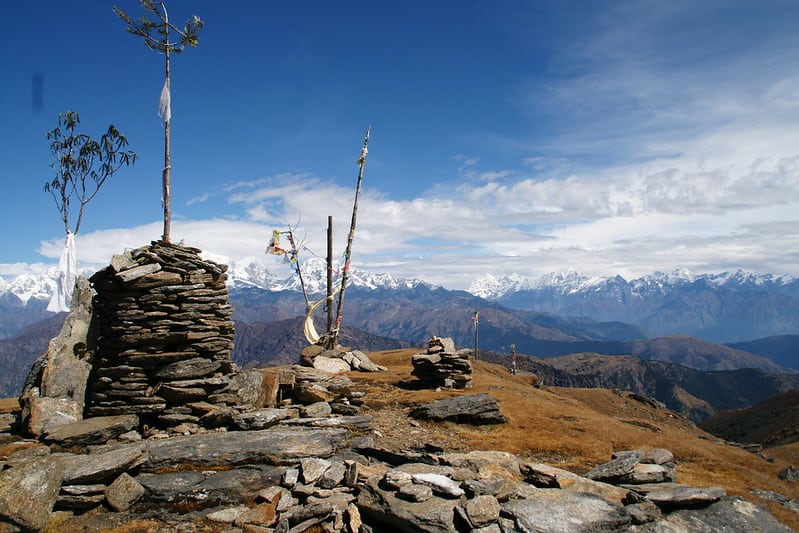
When is the best time for the Pikey Peak trek?
Between mid-September and mid-February, when the view is the clearest with a lot of sunshine, is the best season to complete the Trek. The beginning of September can be risky if the monsoon lasts longer than usual. Avoid this trail during the monsoon time (June-August) as it can be muddy and slippery. If you want to go hiking during monsoon time, choose the Dolpo or Mustang treks. Located behind the Himalayas, they have a uniquely dry climate all year.
Read more about the best short and long treks in Nepal
Where is Pikey Peak?
The trail is part of the Lower Khumbu region (the Mount Everest is in the Upper Khumbu), called Solu Khumbu. Solu Khumbu stretches from Jiri town in the west to the Dudh Kosi River in the east. It is a low-lying area with farmlands cultivated with maize, wheat, barley, and apples. The Sherpas consider the Solu Khumbu a sacred valley. In this remote part of Nepal sharing a border with Tibet, Buddhism has a strong presence. There are numerous Buddhist monasteries (gompa), stupas (chorten), and praying walls along the way. The two main cultural trails of the region are the Pikey Peak and Dudh Kundha trail. They are the most amazing when rhododendrons and magnolias are blossoming.
How difficult is it to complete the trek?
The difficulty rate of only completing the Pikey Peak trek: 5.5/10
The difficulty rate completing Pikey Peak trek combined with Dudh Kunda: 6.5/10
Trekking solo or with a trekking agency
Since there is much less information about this hiking trail, very few people complete it. Even travel agencies only recently started to offer packages to Pikey peak. In the lack of information, you can quickly get confused. They plan to issue maps as of 2021, which will probably make it easier for trekkers. If you go for the long trekking, you need to camp some nights. In this part of the trail, there are no teahouses. When more tourists are coming, locals will start to build more accommodation. But for the moment, it is better to book a package with a trekking agency.
Costs of the Trek
Pikey trail is not part of any national park or conservation area, so you do not need to buy the regular National Park permit. But you would still need the TIMS, which costs around 20 $ and is valid for a month.
The package with a trekking agency (Nature Explore Trek) costs:
1. Pikey Peak trek with flight 975 $/person without flight 780 $/person,
2. Dudh Kunda trek with flight 1600 $/person, without flight 1500 $/person
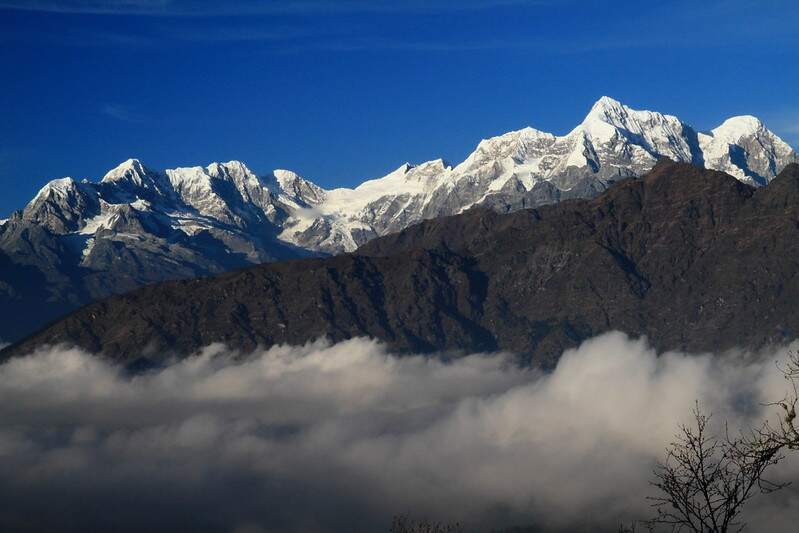
Detailed itinerary of the Pikey Peak trail (4-7 days)
You can complete the trekking in only 4 days if you are fit or short of time. Otherwise, you can make it more relaxing and visit some chortens, monasteries on the way and take 7 days.
1. day – from Kathmandu to Dhap bazaar (2930 m)/Jhapre viewpoint
You have two options to get from Kathmandu to the start of the trailhead:
1. Take a 30 minutes flight from Kathmandu to Phaplu, a small domestic airport serving the Solu Khumbu district. It is close to the popular Lukla airport, the main gateway to the Everest region.
From Phaplu airport, you drive 1 ½ hour to Dhap bazaar. Taking a flight is more expensive, but faster and more comfortable. With an early flight, already the same day you can walk to the Jhapre viewpoint (4 hours).
Important: The weather conditions are unpredictable in the mountains, and small jets can be delayed or even rescheduled for the day after. If you want to be on the safe side, go for the less convenient jeep ride, but you would not mess up your trekking schedule.
2. If you take a jeep, it takes 8-9 hours to drive straight to Dhap bazaar (2930m). It is cheaper, but the roads are bumpy all over Nepal. One night in a lodge in Dhap bazaar, a small village with a panoramic view.
2. day From Dhap Bazaar to Jhapre (2815 m)
Today you walk 13 kilometers from Dhap Bazaar to Jhapre via Sigane. There is a clear view of the Everest (8848 m) and the Numbur Himal. In Jhapre you can visit gompas (monasteries) and stupas. Overnight in a lodge in Jhapre.
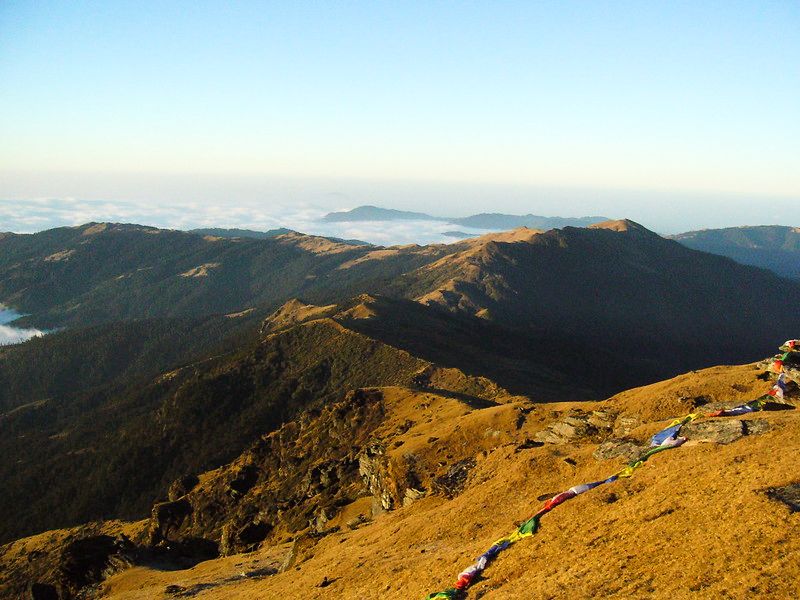
3. day From Jhapre to Pikey Peak base camp (3640 m)
It takes 5-6 hours to walk to the Pikey Peak Base Camp (15 km). After Bhulbule (there is a teashop to have lunch here), the trail becomes steep and takes you through rhododendron forests, pastures with grazing yaks, and along many praying walls. At Pikey Peak Base Camp, you can take a visit to a government yak cheese factory.
If you are in good shape, you can get to the Pikey Peak viewpoint within 3 hours walking up and 1 ½ hours back on the same day. The Mount Everest is the most beautiful at sunset. Otherwise, you will climb to the viewpoint the day after.
One night in a homestay at Pikey base camp
4. day Pikey Peak Base Camp- Pikey Peak (4065 m) – Pikey Peak Base Camp
You set off in the morning to Pikey Peak, the main point of your trekking.
Pikey Peak offers an incredible panorama from Dhaulagiri in the west to the Kanchenjunga massive in the east. No other well-known trails provide the same experience with six mountain ranges at once: Kanchenjunga range, Makalu range, Everest range, Gaurishankar range, Langtang range, and Annapurna range.
Take your time and enjoy the jaw-dropping view. You could continue to Taktor the same day, but it is nice to take your time on the top and make it a relaxing day instead of rushing to Taktor or Junbesi villages.
5. day From Pikey Peak Base Camp to Taktor (3000 m)
You start to descend and head towards Lamjura Pass. On the way, you can have lunch in the Jasmane Bhanjyang lodge. You pass northwest by Lamjura Pass and take a shortcut towards Taktor.
The tea houses from this point are a little more equipped, and you are likely to meet a few other tourists. On this day, you walk mainly downhill through the forest that blocks the mountain view.
The path to Taktor joins the classic Everest trail coming from Jiri. In the old times, the Jiri trail was the only possible path to Mount Everest. You can still hike it, but it will take a month to reach the big mountain. The old, classical trekking trail is now the only way to Everest Base Camp, for which you do not need to take a flight to Lukla. Sir Edmund Hillary and Tenzing Norgay Sherpa also took the traditional route to conquer Everest for the first time in 1953.
6. day Taktor- Junbesi (2700 m)
After 2-3 hours of an easy walk, you reach Junbesi, the biggest village with a Sherpa community and a reputed monastery. After walking just 1 ½ – 2 hours uphill, you get to the biggest monastery of Lower Khumbu, the Thupten Chöling monastery lying at 3250 meters. Almost 1000 monks and nuns actively work to keep Tibetan Buddhism alive. It grew to be an important spiritual center of the eastern part of Nepal.
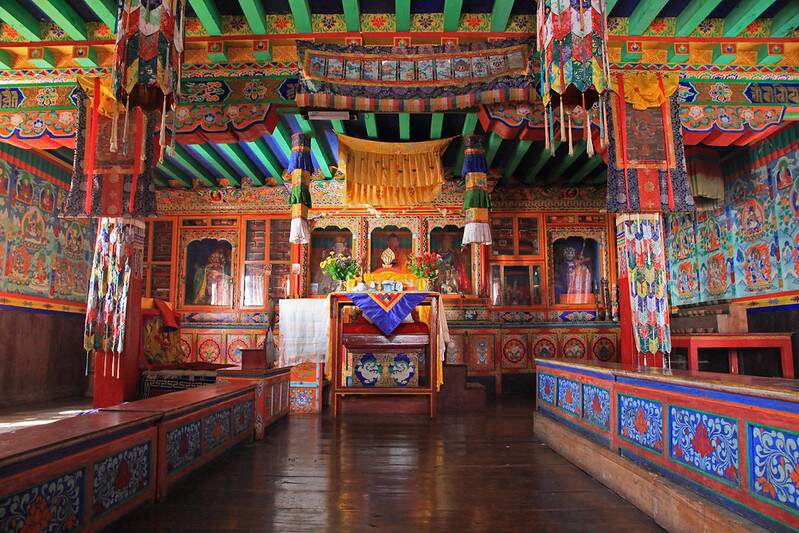
It has been the first stop of Tibetan refugees in Nepal after they fled from Tibet. They had to cross the high mountains to arrive here, and many died on the way. Most continue to Dharamsala in India, but some stay as a monk or a nun in Nepal. Until today they can get shelter here. There are several Tibetan refugee camps in the capital, Kathmandu, as well.
Trulshik Rinpoche, the founder of the monastery, is also a former Tibetan refugee and settled in the Solukhumbu region in 1959. Despite its scarce resources, Nepal offered refuge to all the Tibetans who had to leave their country due to pressure. The Tibetans are grateful to the Nepali government for this gesture.
The purpose of Rinpoche was always to return to Tibet. That’s why he did not build the monastery for permanent use. The walls started to crumble in the 1990s. In 2001, they started the large scale reconstruction of the building. It was a clear indication that the monastery will play a central role in preserving their culture and religion in Nepal.
The monks and nuns follow the original Tibetan lifestyle and live under very puritan conditions. Due to its remoteness, they have no access to public health facilities and rely on limited resources. Trulshik Rinpoche is considered a high-ranked lecturer in the Buddhist community, one of the last to have been educated in “Old Tibet”. He is even a teacher to the Dalai lama.
One night in Junbesi
7. day From Junbesi to Phaplu airport
You cross the steel suspension bridge and reach Beni Ghat. Within 3-4 hours walking, you arrive in Phaplu, from where you take the short, scenic flight back to Kathmandu.
Another option for the Pikey Peak trail is to pass through Taksindu and Ringmo after Junbesi. In this case, the last 2 days will be the following:
7. day From Junbesi to Taksindu (2850m)
Instead of walking from Junbesi directly to the Phaplu airport, you can take a trail from Junbesi to Taksindu. You climb the forest up to Salung, which offers a nice view of the Mount Everest (8848 m), Chamlang (7319 m), and Makalu (8481 m). After some downhill walks, you continue uphill to Ringmo, which is well-known for its apple orchards and other apple products: apple rakshi spirit, cider, and apple pie. You continue to cross the Taksindu Pass with great mountain views, and after some descent, you reach Taksindu village.
8. day From Taksindu to Phaplu
You walk through the forest to reach Phaplu, where you can visit the Chiwong Gompa.
Take a flight or drive back to Kathmandu the same day or the day after.
Pikey Peak- Dudhkunda Lake combined trail (15 days)
If you have some extra time, you can combine the Pikey Peak trail with the Dudhkunda lake Trek. As the highlight of this trail, you get close to the Numbur Himal, the over 7000 meters-high sacred mountain at the “milky” Dudhkunda lake.
7. day From Junbesi to Yak Kharka (seasonal shelter place) – 3840 m
Today you walk 6-7 hours slowly uphill in the forest. At this part of the trek, there are no homestays. You must camp overnight. Yak Kharka is the temporary settlement for yak owners, who move around to find an ideal place to feed their animals. They only come during summer to this place. But from autumn, it is hard to find grass around here, and they move further down. If a small yak is born, they also move to Yak Kharka.
8. From Yak Kharka to Saharsbeni 4040 m
On this day, you walk 5-6 hours, mostly uphill, and stay at Saharsbeni for overnight camping.
9. day From Saharsbeni to Dudhkunda lake (4600 m)/Numbur base camp (4600 m)
After 5-6 hours of mostly uphill walk, you get close to the Numbur mountain and the holy Dudhkunda (“milky”) lake. They created the Base Camp to avoid that people sleep at the sacred lakeside. Every year in July and August, thousands of Hindus and Buddhists gather to celebrate. During the festival, they set up temporary shelters for pilgrims.
You are standing the closest possible to the over 7000 meters-high Numbur Himal (locally known as „Shoring Yul Lha”) mountain, the protector of the Solu Khumbu region. Locals believe that the lake is the abode of Lord Shiva, and taking a dip in the holy water will wash away all their sins. Some pilgrims are fasting for months before the festival to venerate Lord Shiva and his wife, Goddess Parvati.
10. day – From Dudhkunda lake/Numbur base camp to Timba (3900 m)
From the sacred lake, you start to descend. In a 5-6 hours’ forest walk, you reach Timba, where you can set up your tent.
11. day From Timba to Taksindu (2850 m)
Taksindu is part of the classic “Jiri” Everest trail and there are already some proper teahouses or lodges to stay.
12. day From Taksindu to Phaplu
After a 5-6 hours walk, you reach Phaplu, where you can take the flight or a jeep back to Kathmandu the same day or the next day.
In Phaplu, you can visit the Chiwong Gompa, one of the main monasteries of Solu Khumbu perched in the rocks above Phaplu.
The Chiwong Gompa is famous for its colorful celebrations during the Mani Rimdu festival. The 19-day festival takes place between mid-October and mid-November. The three main days of the festival are public holidays in Nepal. After harvest time, some walk 2-3 days to celebrate in the Chiwong monastery.
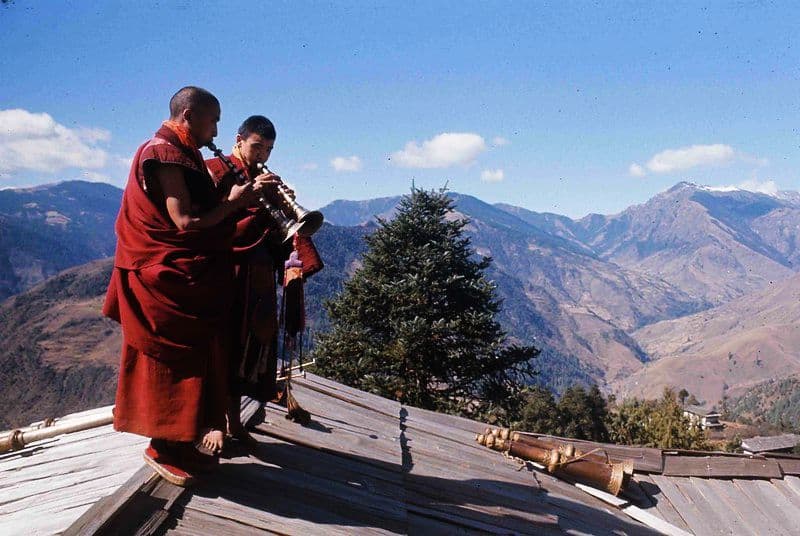
The Mani Rimdu festival recalls the story when Guru Rinpoche (Padmasambhava) founded Buddhism in Tibet. Sherpa and Tibetan Buddhist people celebrate together with dancing. The head lama of the Chiwong monastery, Tulshig Rimpoche, fled China in the 1950s. He built the Thupten Choling monastery near Junbesi that has become the biggest in the region. Every year he comes to Chiwong gompa as a sign of gratitude to conduct the rituals during the festival. The Chiwong monks were the ones who sheltered him first when he arrived in Nepal.
The pilgrims dress up in their finest traditional clothes with precious amber of coral jewelry. The monks perform the sacred Mani Rimdu dances only this time of the year.
Just by watching the dances, the devotees get blessed.
Buddhism arrived in Tibet in the 7th century when King Songtsen Gampo married a Nepalese princess. He became not only attracted to the woman but also to her culture and religion as well, and he started to build the first Buddhist temples in Tibet. Buddhism was enlightenment, a blessing for Tibet.
Another itinerary for Pikey Peak (from Bhandar)
Since there is a road to Dhap Bazaar, almost everybody completes the Pikey Peak trail from here. The classical Jiri-Bhandar trail got abandoned. Dhap Bazaar is the easiest, fastest way, and most beautiful trail to Pikey Peak. From Dhap bazaar, you already see the Everest, Makalu, Gaurishankar mountain ranges from a distance that makes your trekking much more enjoyable. Bhandar is a commercial town without any mountain view. Before, the only possible way was from Bhandar. The Bhandar trail requires long days of hiking too.
If you still choose the Bhandar trail, then you will follow the following itinerary:
1. day Drive from Kathmandu to Bhandar
You drive from Kathmandu to Jiri town (8-9 hours, 133 km). Jiri also called “The Switzerland of Nepal”, is a beautiful mountain village. The green valley, terraced farmlands, and surrounding snow-covered peaks give an alpine feeling to the place. Jiri is the gateway to the Himalayas. In Jiri, you switch your vehicle to jeeps to take the off-road to Bhandar. From Bhandar you will walk to Kinja.
2. day From Bhandar to Sete
This is our last day of the trek. The trail is a one to two-hour downhill walk to Kinja Khola (river). Then, the trail is a combination of 3-4 hours of straight walk and downhill to the market town of Bhandar.
Overnight in lodge
3. day From Sete to Junbesi
After 2-3 hours it is a straight walk uphill to cross the Lamjura Pass (3530m). Enjoy the nice panorama and walk 3-4 hours mixed up and down to Junbesi.
The Pikey Peak trek is the best option if you want to have the best panorama of the Everest region and you want to avoid the tourist crowd. This can be completed in 4-7 days depending on your fitness. If you have some extra time, and you do not mind camping overnight, combine the Pikey Peak Trail with the Dudhkunda Lake. Since there is little information about this trail, you had better hire a guide and porter or book a package at a trekking agency!
Pin it for later!
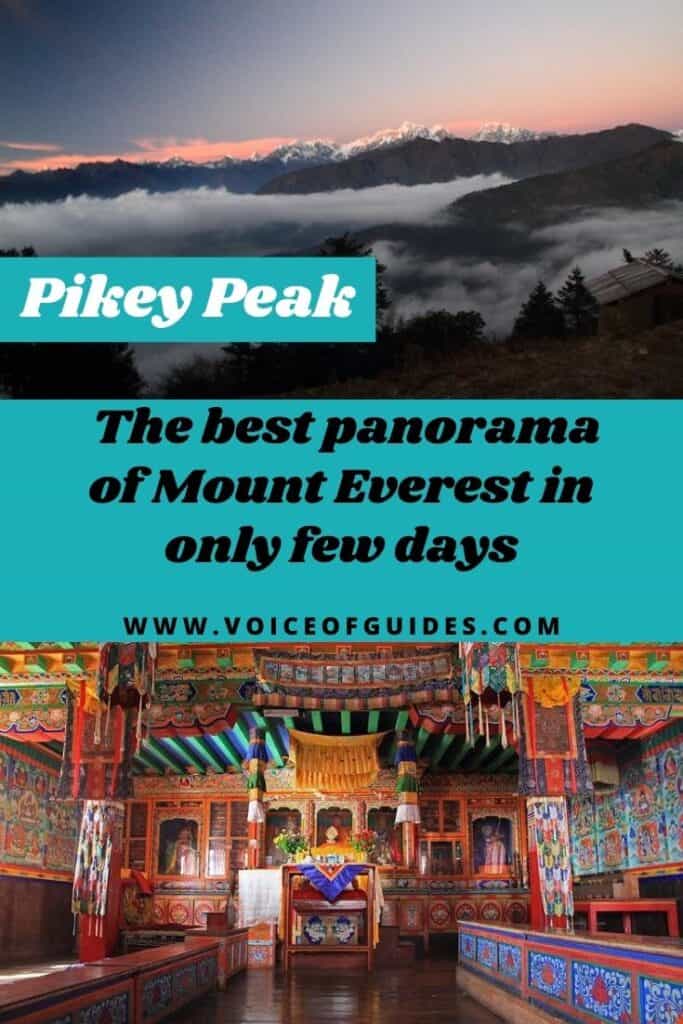

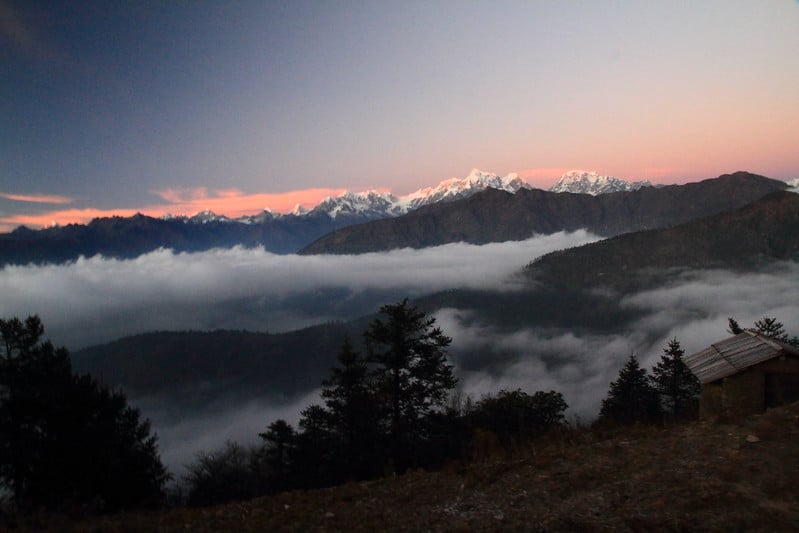

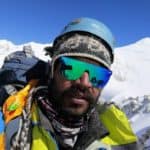
Pingback: The best short and long treks in Nepal | Voice of Guides